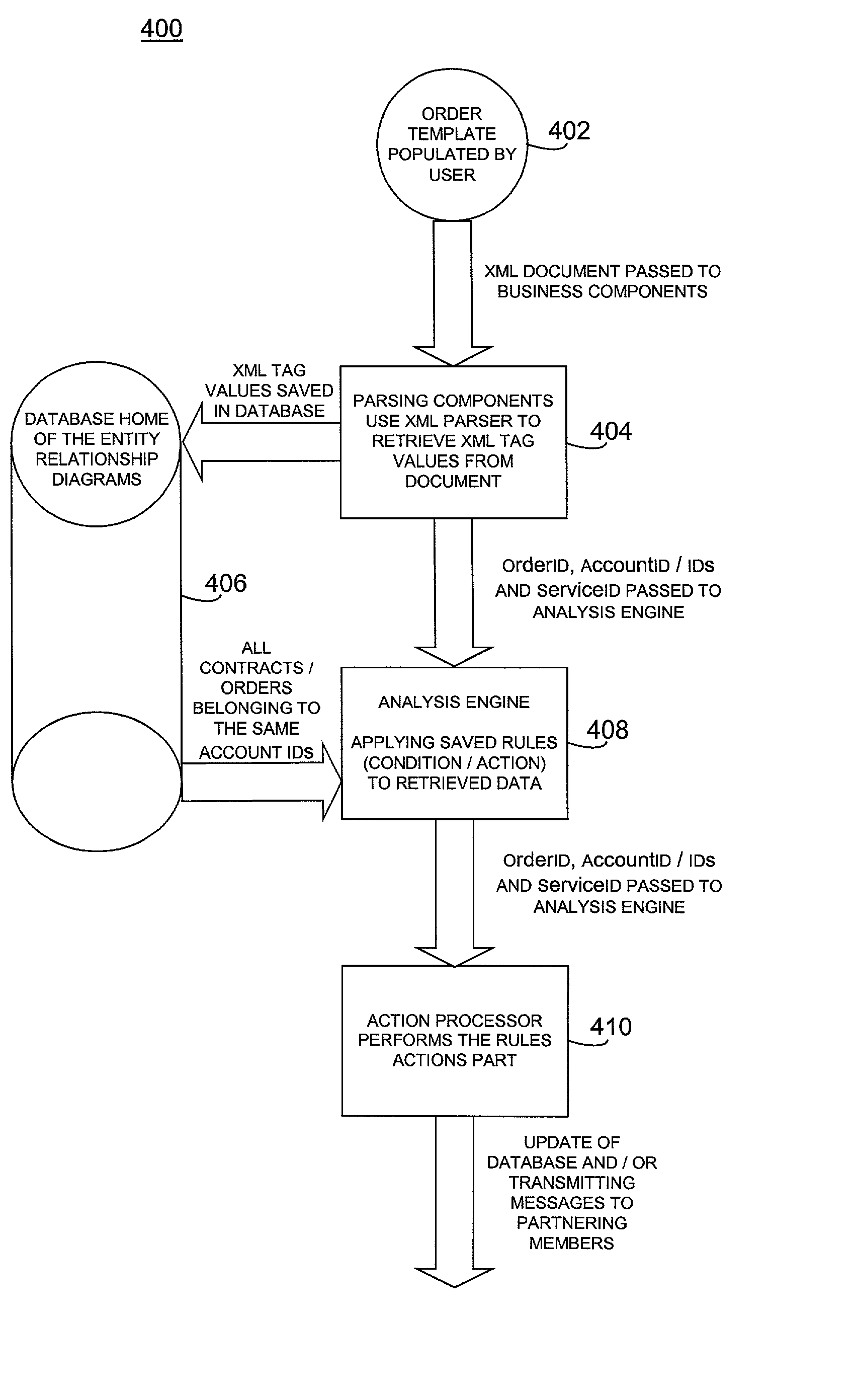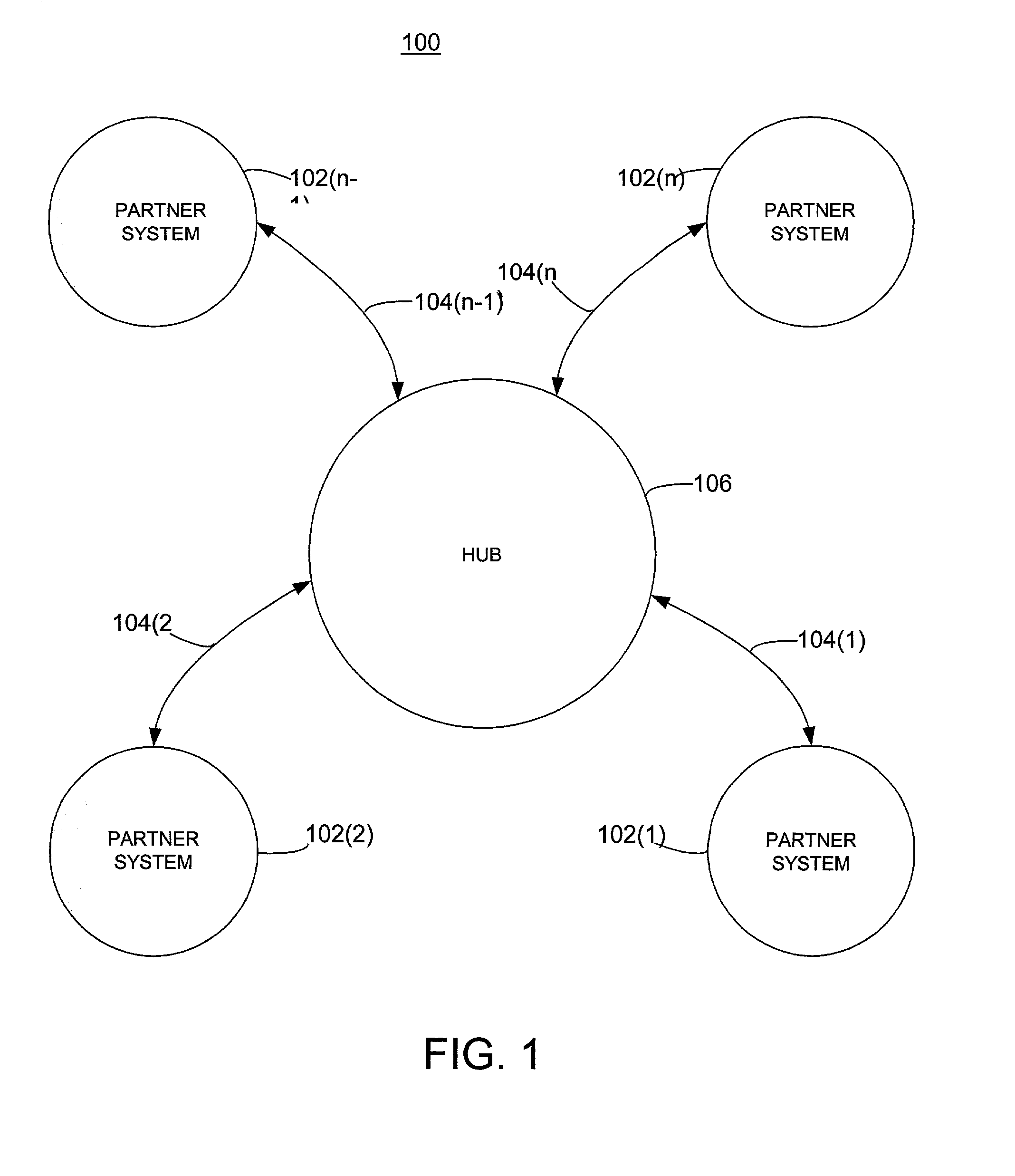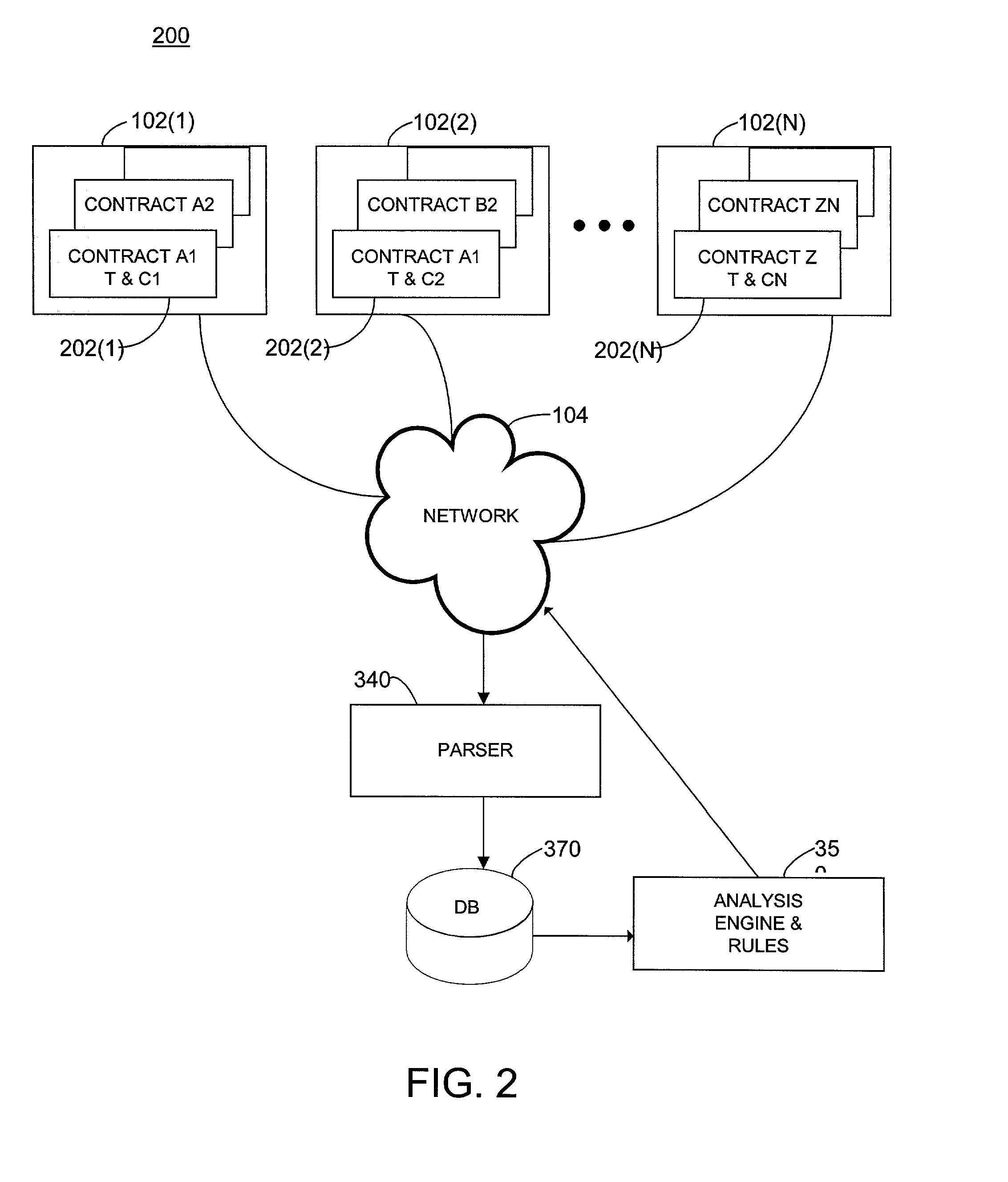Creating, distributing and enforcing relational and business rules at front-end application
a relational and business rule technology, applied in the field of managing systems for contracts, orders, trouble tickets and other operation support systems, can solve the problems of increasing the cost of client-server round trips, the need to use rules and rule data at a multitude of client locations, and the difficulty of scaling the number of clients that can access the data simultaneously
- Summary
- Abstract
- Description
- Claims
- Application Information
AI Technical Summary
Benefits of technology
Problems solved by technology
Method used
Image
Examples
service example
[0252] Telecommunications Service Example
[0253] An example scenario that clarifies the operation of this embodiment is order entry for a telecommunication service. In this example the telecommunication service is frame relay, from a service provider. Example fields in such an order are access type and network jack code. Telecommunication providers normally support multiple access types. However, for each access type a different and limited set of network jacks are supported. Moreover, it is not possible to have a port without having an access. In other words, it is not possible to order a port in this telecommunications example without an access because the access number is required information when provisioning a port. The rules covering such scenario are:
[0254] Access types supported are
[0255] accessType range is 0-6 (valid values are 0 "GDA", 1 "T1.5 with M24", 3 "Full T1, and 6 "DDLC")
[0256] Network jack types supported are
[0257] If accessType=0 (GDA) then,
[0258] JackCode valid ...
PUM
 Login to View More
Login to View More Abstract
Description
Claims
Application Information
 Login to View More
Login to View More - R&D
- Intellectual Property
- Life Sciences
- Materials
- Tech Scout
- Unparalleled Data Quality
- Higher Quality Content
- 60% Fewer Hallucinations
Browse by: Latest US Patents, China's latest patents, Technical Efficacy Thesaurus, Application Domain, Technology Topic, Popular Technical Reports.
© 2025 PatSnap. All rights reserved.Legal|Privacy policy|Modern Slavery Act Transparency Statement|Sitemap|About US| Contact US: help@patsnap.com



